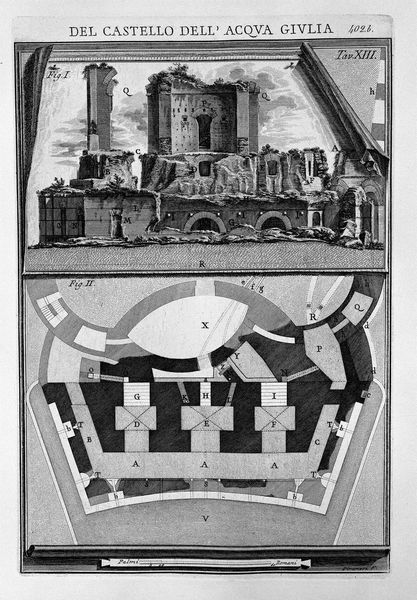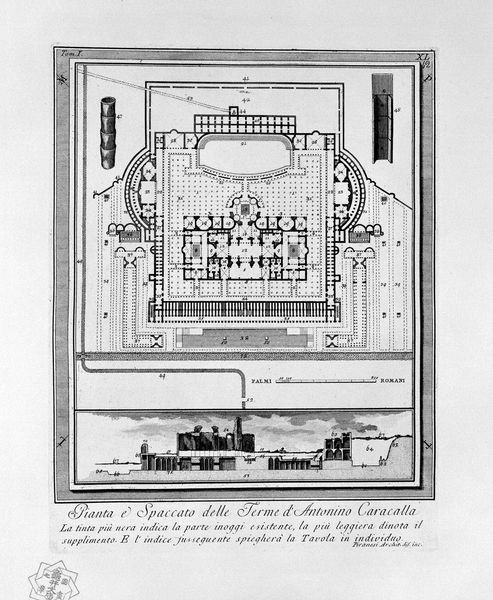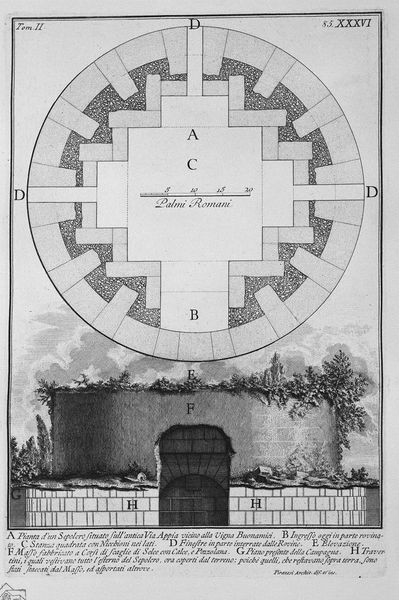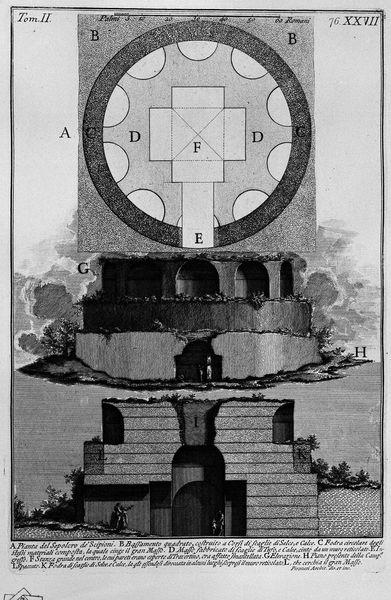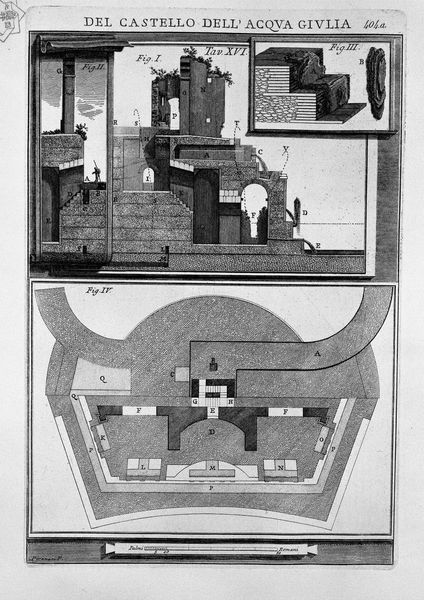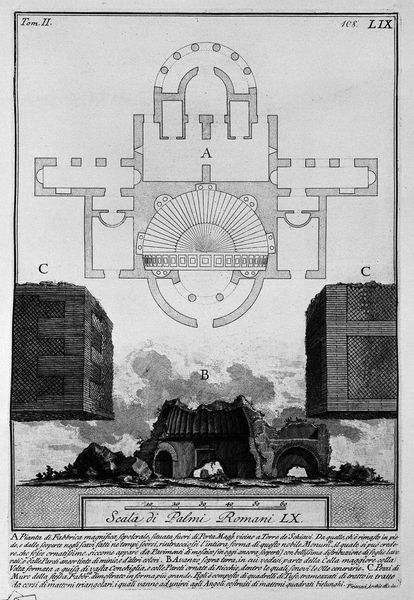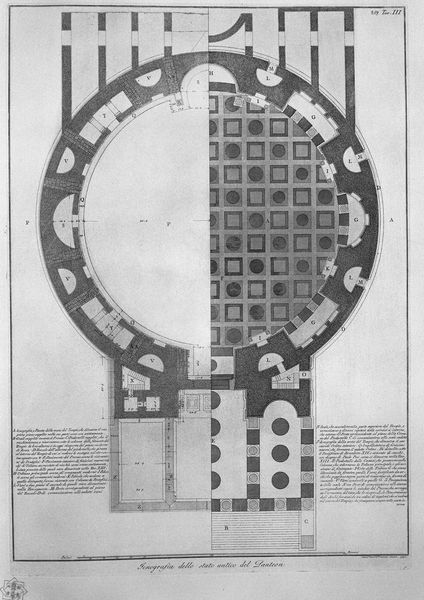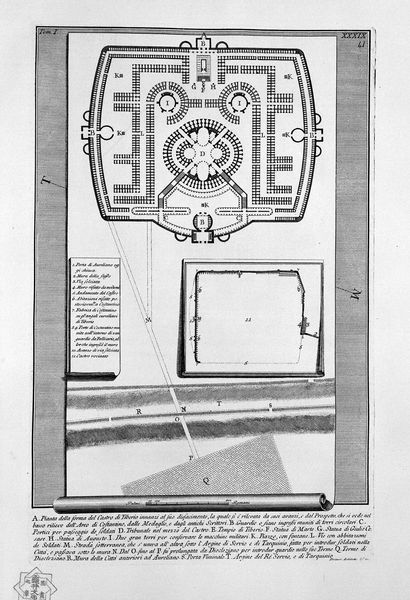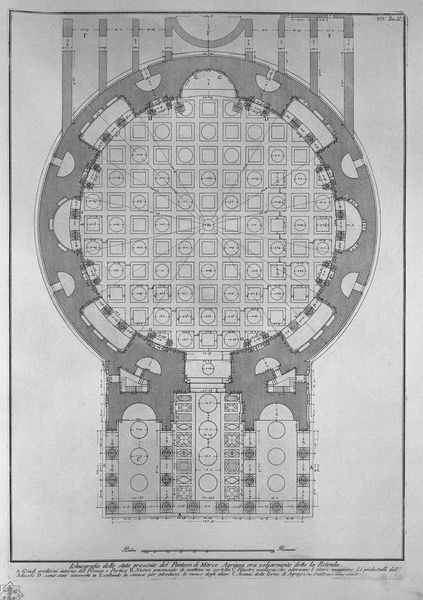
The Roman antiquities, t. 1, Plate XLI. The Nymphaeum of Nero, the Stadium, the `Odeo, and the Temples of the people Flavia, manufactured by Domitian 1756
0:00
0:00
drawing, print, etching, engraving, architecture
#
drawing
# print
#
pen illustration
#
etching
#
romanesque
#
geometric
#
cityscape
#
history-painting
#
engraving
#
architecture
Copyright: Public domain
Curator: What a stunning plate from Piranesi's "Roman Antiquities," published in 1756. It depicts the Nymphaeum of Nero, the stadium, the odeon, and temples created by Domitian. All brought to life through etching, engraving, and the precision of architectural drawing. Editor: Immediately, I'm struck by how desolate it feels, even though it's an architectural plan, meant to celebrate structure and order. The stark contrasts of the engraving amplify a sense of grandeur now lost. Curator: Lost indeed, but Piranesi, with his artistic flourishes, offers not just a record but also a palpable sense of the sublime. He presents the vestiges of Roman glory, intertwined with nature claiming its due. The precise lines tracing those ancient structures contrast so vividly with the surrounding topography of the hills. Editor: Right, those carefully rendered geometrical shapes are placed on what looks like an island, isolated and self-contained. Even the lettering seems encased, floating on separate pieces, and adds to the sense of something removed and almost mythological. Curator: Symbolically potent, I think. The "island" shows both preservation and detachment, highlighting ruins. Consider how Piranesi elevates what's ruined to high art! The drawing serves not as an archaeological record but as a stage for historical meditation. He understood ruins speak profoundly about power and mortality. Editor: It makes me wonder about cultural memory, especially what those Roman symbols might have meant in 1756. What continuities did people perceive between the past empire and the present? Was it nostalgia or perhaps a way of understanding present power structures? Curator: Good question, and likely both. This print could have fed the 18th-century fascination with antiquity, as a reminder of past glories or a meditation on how empires rise and fall. Piranesi's work serves as a testament of architectural preservation and as an act of artistic imagination, inviting to see both with fresh eyes. Editor: Absolutely, and thinking about what this imagery has meant through time – architectural record, romantic ruin, meditation on empire – its potency continues. A really compelling blend of artistry and information!
Comments
No comments
Be the first to comment and join the conversation on the ultimate creative platform.

